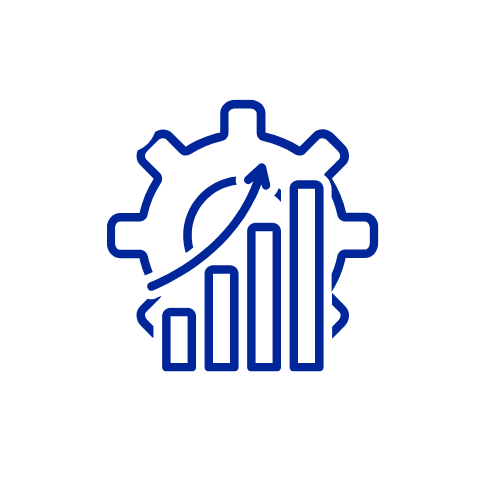Key Investments to Ensure Mission Readiness

By Presley Price
Speed and quality are non-negotiable when it comes to equipping and resupplying our front-line users with best-in-breed products.
The Russia-Ukraine war has highlighted that the U.S. Defense Industrial Base (DIB) lacks the capacity for today’s critical weapons, and this risk only grows as we consider the advanced weapons needed for the future fight. Ukraine's consumption of the supplied U.S. and allied weapons and support systems is putting significant pressure on the Industrial Base since utilization rates are exceeding current capacity, and with Industry scrambling to replenish stockpiles this will leave little bandwidth to develop and field new systems needed for a near-peer fight. While military aid to Ukraine has helped prevent a Russian victory, the assistance has depleted stockpiles and shows the DIB must make significant investments to shore up its magazines and be able to surge in the case of conflict.
Northrop Grumman continues to support its U.S. customers and global allies in the pursuit of global security. As a leading provider of advanced propulsion systems and mission-critical components that power the missiles protecting the nation, the company is experienced in combining unique capabilities to meet challenging mission requirements in an expeditious and cost-effective manner. Since 2018, the company has invested significantly in cutting-edge technology and necessary infrastructure that’s Defining Possible for the nation’s DIB.

Digital Transformation
Leading-edge digital manufacturing technologies, including the use of smart equipment, paperless work instructions and processing, and modular work cells.

Capacity
Significantly increasing capacity for missiles and advanced ammunition.

Advanced Manufacturing
Rapid prototyping, increased additive manufacturing, highly integrated and automated assembly lines, more advanced modeling and simulation tools and executing design with manufacturing so they are almost simultaneous.

Adaptability
New and modernized facilities are equipped to be able to react to new programs or changes in customer mission requirements.

Strengthen Supply Chains
Consolidating key elements of manufacturing under one roof for programs, allowing full lifecycle production of products from design and development to integration.
Establishing Foundational Infrastructure
Northrop Grumman is investing in infrastructure designed to be inherently agile and able to pivot to meet fluctuation of demand across weapons systems. Each facility is a foundational enabler for key capabilities applicable to a broad range of DoD needs, not specific programs. The company is building above demand signal, ensuring surge potential to quickly react to changes in customer requirements. This will enable U.S. forces and our allies to select the most effective weapons for unique engagements and have adequate quantities at their fingertips faster than ever before.

Hypersonics Capability Center
One-of-a-kind facility in the U.S. designed for large scale manufacturing of air-breathing propulsion critical for powering hypersonic missiles beyond Mach 5. This facility will make high-rate production of hypersonic missiles a reality.

Missile Integration Facility
Factory of the future designed to produce and integrate various types of missiles and adapt swiftly to meet demand changes – all while optimizing quality, reducing costs and delivering to the warfighter faster.

Propelling Space and Defense Missions
Constructing 11 new manufacturing facilities to significantly increase the production count of rocket motors that propel the nation’s strategic space and defense missions.
Accelerating Timelines with Disruptive Technologies
Producing advanced materials at up to half the cost and schedule of traditional manufacturing seems impossible – until it’s not. Northrop Grumman continues to invest in disruptive technologies that empower our teams to work smarter and deliver products to the warfighter faster. The company’s manufacturing advancements and custom process automations dramatically reduce intensive labor, manufacturing time and cost, while improving component quality and consistency.

Advanced Manufacturing

Advanced Materials

Digital Engineering Tools

Building a Resilient Pipeline of Talent
Another obstacle impacting the industry’s ability to effectively scale production of key weapon systems is the nationwide labor shortage. Northrop Grumman is changing the way work is done for manufacturing teams, leveraging digital engineering and advanced modeling and simulation tools to execute design and manufacturing so they are almost simultaneous. The result is more impactful, higher skilled workers, fewer workers per program, and increased affordability for customers because systems are designed with manufacturability, cost, speed and scale in mind.
Northrop Grumman is working with high schools, colleges and universities across the nation to build a resilient pipeline of talent. Through programs such as the Manufacturing Technician Certificate program, Northrop Grumman provides unique educational pathways to reach these critical, high-tech manufacturing positions.

Creating the DIB of the Future
Northrop Grumman’s key investments support both the tactical weapons critical for close-in, ground engagements and the advanced weapons that will provide greater standoff for disaggregated battles that span oceans.
“Hypersonics doesn’t have a defense industrial base. We’re creating that today,” said Haynes. “The industry has the capability to create the next generation of weapons; however, it will take a whole of Government and Industry approach. The future fight is about logistics, having a deep magazine and being able to resupply it quickly.”
Contrary to some misconceptions about advanced weapons, such as hypersonic cruise missiles, with the right infrastructure and technology in place these systems can be produced quickly and affordably. Haynes says investment to ensure mission readiness for U.S. forces is a shared responsibility between the Defense industry and U.S. Government.
“Relying on the industry alone to invest in facilities to expand our advanced weapons capacity will lead to more expensive end products. It’s about challenging the industry’s perspective – building in a smarter way. Partnership between industry and USG to invest on the front end will drive affordable mass in the future, and the time to start is now,” said Haynes.